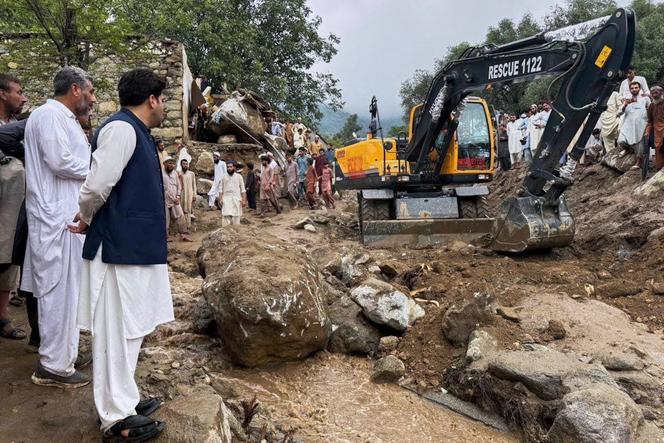


Heavy monsoon rains triggered landslides and flash floods across northern Pakistan, killing at least 160 people in the last 24 hours, disaster authorities said Friday, August 15. The majority of the deaths, 110, were recorded in mountainous Khyber Pakhtunkhwa, according to the province's Disaster Management Authority. Seven more people were killed in Pakistan-administered Kashmir, regional disaster management authorities said.
"So far, across Khyber Pakhtunkhwa, more than 110 people have died due to cloudbursts, flash floods and roof collapses," PDMA spokesperson Anwar Shehzad told Agence France-Presse (AFP). Another 60 people have been injured, he added. He said Buner, Bajaur, Mansehra and Battagram have been declared disaster-hit districts.
In Bajaur, a tribal district abutting Afghanistan, a crowd amassed around an excavator trawling a mud-soaked hill, AFP photos showed. Funeral prayers began in a paddock nearby, with people grieving in front of several bodies covered by blankets. The meteorological department has issued a heavy rain alert for the northwest, urging people to avoid "unnecessary exposure to vulnerable areas." In the Indian-administered part of Kashmir, a region divided with Pakistan, rescuers pulled bodies from mud and rubble.
The monsoon season brings South Asia about three-quarters of its annual rainfall, vital for agriculture and food security, but it also brings destruction. The torrential rains that have pounded Pakistan since the start of the summer monsoon, described as "unusual" by authorities, have killed more than 320 people, nearly half of them children. Most of the deaths were caused by collapsing houses, flash floods and electrocutions.
In July, Punjab, home to nearly half of Pakistan's 255 million people, recorded 73% more rainfall than the previous year and more deaths than in the entire previous monsoon. Landslides and flash floods are common during the monsoon season, which usually begins in June and eases by the end of September.
But scientists say climate change has made weather events around the world more extreme and more frequent. In 2022, monsoon floods submerged a third of the country and killed 1,700 people.
